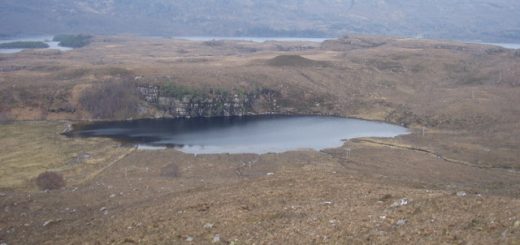The Knockers
In many old established mining areas throughout the world, there was along tradition of mine spirits, in Cornwall these were known as the Knockers. They frequented the tin mines that formed much of local economy in 18th and 19th century Cornwall. Knockers was not the only name given to mine spirits others being Knackers, Buccas, and Spriggans to name a few. As well as the mines, the Knockers were thought to haunt some wells and other natural features, which along with the other names for them, suggests a wider use of the term to describe supernatural creatures.
According to descriptions, the Knockers took the form of small thin-limbed entities with large hooked noses. They inhabited the deepest darkest parts of the mine, and could sometimes be heard knocking and working their own lodes in the darkness. No doubt that any distant creak or rock fall would be amplified in the claustrophobic darkness of the mines. It is no wonder spirits were thought to inhabit these dangerous work places, where thoughts of the supernatural could cause an instant shiver down the spine.
The Knockers generally kept to their own company and were thought to be benevolent, knocking at the richest of the lodes and showing themselves only to those that they favoured.
But as with all fairies they needed to be treated with respect, whistling could offend them, as could intentional spying on their activity, and making the sign of the cross. To appease them they were left small offerings of food or tallow, in the more remote parts of the mines, failure to do this could cause repercussions such as bad luck. Strange tricks were often played on those who offended them, and a miner could find himself led to dangerous places in the mine.
There were a few musings as to the origin of the Knockers, some thought they were the ghosts of Jews who were working the mines in penance. Another theory suggests they were the spirits of souls who could not gain access to heaven or hell, this is also used as an explanation for wider manifestations of fairies. The fact that Knockers were also thought to haunt other recesses and wells, suggests the name became mixed in some quarters to describe several types of fairy.
Belief and sightings of Knockers has died with tin mining industry, although they are still thought to reside in the dark un-worked tunnels in some quarters, now free from human interaction.




Re: The Knockers
There are similar stories told about the Stiperstones Lead mines in Shropshire. Miners there said that Edric the Wild, the West Mercian "Robin Hood" entered the fairy otherworld via the lead mines. His purpose was to find his estranged fairy wife, "Lady Godda" who returned to her own world when Edric broke his sacred promise never to speak of her six fairy sisters. The miners often heard Wild Edric, moaning and groaning and begging forgiveness of them for making terms with William the Bastard, or "conqueror" as the schoolbooks call him. But when Britain goes to war Edric and his Lady, Godda, are released from their spell, and emerge from the mines to ride a wild hunt across the shropshire hills, riding in the direction of the forthcoming war. They were seen in Napoleonic times, at the outbreak of the Crimea and the Boer war, and in 1914.